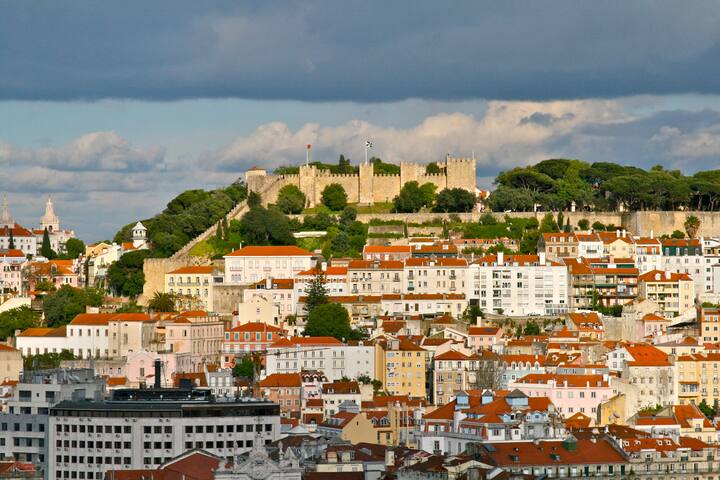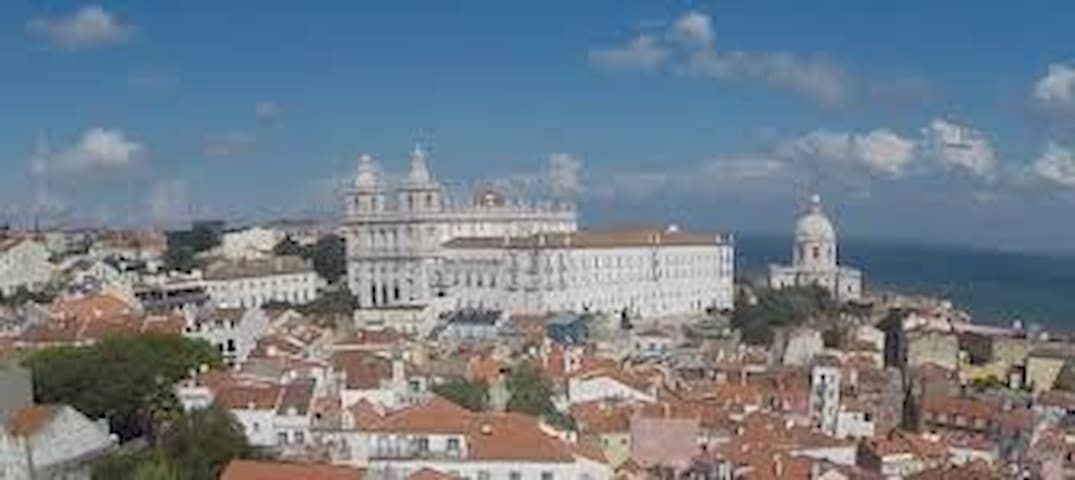Bairros
The Alfama (Portuguese pronunciation: [aɫˈfɐmɐ]) is the oldest neighborhood of Lisbon, spreading on the slope between the São Jorge Castle and the Tagus river. Its name comes from the Arabic Al-hamma (الحَمّة), meaning "hot fountains" or "baths". The district includes the freguesias (parishes) of São Miguel, Santo Estêvão, São Vicente de Fora and part of the two streets, "Freguesia da Sé: Rua do Barão" and "Rua São João da Praça". It contains many important historical attractions, as well as an abundance of Fado bars and restaurants.
829 íbúar mæla með
Alfama
The Alfama (Portuguese pronunciation: [aɫˈfɐmɐ]) is the oldest neighborhood of Lisbon, spreading on the slope between the São Jorge Castle and the Tagus river. Its name comes from the Arabic Al-hamma (الحَمّة), meaning "hot fountains" or "baths". The district includes the freguesias (parishes) of São Miguel, Santo Estêvão, São Vicente de Fora and part of the two streets, "Freguesia da Sé: Rua do Barão" and "Rua São João da Praça". It contains many important historical attractions, as well as an abundance of Fado bars and restaurants.
Bairro Alto
21 Tv. InglesinhosChiado
Monuments and Museums
São Jorge Castle (Portuguese: Castelo de São Jorge; Portuguese pronunciation: [kɐʃˈtɛlu dɨ sɐ̃w̃ ˈʒɔɾʒ(ɨ)]; English: Saint George Castle) is a historic castle in the Portuguese capital of Lisbon, located in the freguesia of Santa Maria Maior. Human occupation of the castle hill dates to at least the 8th century BC[1][2] while the first fortifications built date from the 1st century BC.[3] The hill on which São Jorge Castle stands has played an important part in the history of Lisbon, having served as the location of fortifications occupied successively by Phoenicians, Carthaginians, Romans, and Moors, before its conquest by the Portuguese in the 1147 Siege of Lisbon.
1774 íbúar mæla með
São Jorge kastali
Rua de Santa Cruz do CasteloSão Jorge Castle (Portuguese: Castelo de São Jorge; Portuguese pronunciation: [kɐʃˈtɛlu dɨ sɐ̃w̃ ˈʒɔɾʒ(ɨ)]; English: Saint George Castle) is a historic castle in the Portuguese capital of Lisbon, located in the freguesia of Santa Maria Maior. Human occupation of the castle hill dates to at least the 8th century BC[1][2] while the first fortifications built date from the 1st century BC.[3] The hill on which São Jorge Castle stands has played an important part in the history of Lisbon, having served as the location of fortifications occupied successively by Phoenicians, Carthaginians, Romans, and Moors, before its conquest by the Portuguese in the 1147 Siege of Lisbon.
Lisabon dómkirkja
1 Largo da SéHieronymosar klaustur
The Church or Monastery of São Vicente de Fora; meaning "Monastery of St. Vincent Outside the Walls" is a 17th-century church and monastery in the city of Lisbon, Portugal. It is one of the most important monasteries and mannerist buildings in the country. The monastery also contains the royal pantheon of the Braganza monarchs of Portugal.
10 íbúar mæla með
Church of São Vicente of Fora
Largo de São VicenteThe Church or Monastery of São Vicente de Fora; meaning "Monastery of St. Vincent Outside the Walls" is a 17th-century church and monastery in the city of Lisbon, Portugal. It is one of the most important monasteries and mannerist buildings in the country. The monastery also contains the royal pantheon of the Braganza monarchs of Portugal.
Belém Tower (Portuguese: Torre de Belém, pronounced [ˈtoʁ(ɨ) dɨ bɨˈlɐ̃ȷ̃]), officially the Tower of Saint Vincent (Portuguese: Torre de São Vicente) is a 16th-century fortification located in Lisbon that served as a point of embarkation and disembarkation for Portuguese explorers and as a ceremonial gateway to Lisbon.[1][2] It was built during the height of the Portuguese Renaissance, and is a prominent example of the Portuguese Manueline style,[3] but it also incorporates hints of other architectural styles.[4] The structure was built from lioz limestone and is composed of a bastion and a 30-metre (98.4 ft),[5] four-storey tower.
Since 1983, the tower has been a UNESCO World Heritage Site, along with the Jerónimos Monastery. It is often portrayed as a symbol of Europe's Age of Discoveries[2] and as a metonym for Portugal or Lisbon, given its landmark status. It has incorrectly been stated that the tower was built in the middle of the Tagus and now sits near the shore because the river was redirected after the 1755 Lisbon earthquake. In fact, the tower was built on a small island in the Tagus river near the Lisbon shore.[4][6]
866 íbúar mæla með
Belém turninn
Av. BrasíliaBelém Tower (Portuguese: Torre de Belém, pronounced [ˈtoʁ(ɨ) dɨ bɨˈlɐ̃ȷ̃]), officially the Tower of Saint Vincent (Portuguese: Torre de São Vicente) is a 16th-century fortification located in Lisbon that served as a point of embarkation and disembarkation for Portuguese explorers and as a ceremonial gateway to Lisbon.[1][2] It was built during the height of the Portuguese Renaissance, and is a prominent example of the Portuguese Manueline style,[3] but it also incorporates hints of other architectural styles.[4] The structure was built from lioz limestone and is composed of a bastion and a 30-metre (98.4 ft),[5] four-storey tower.
Since 1983, the tower has been a UNESCO World Heritage Site, along with the Jerónimos Monastery. It is often portrayed as a symbol of Europe's Age of Discoveries[2] and as a metonym for Portugal or Lisbon, given its landmark status. It has incorrectly been stated that the tower was built in the middle of the Tagus and now sits near the shore because the river was redirected after the 1755 Lisbon earthquake. In fact, the tower was built on a small island in the Tagus river near the Lisbon shore.[4][6]





